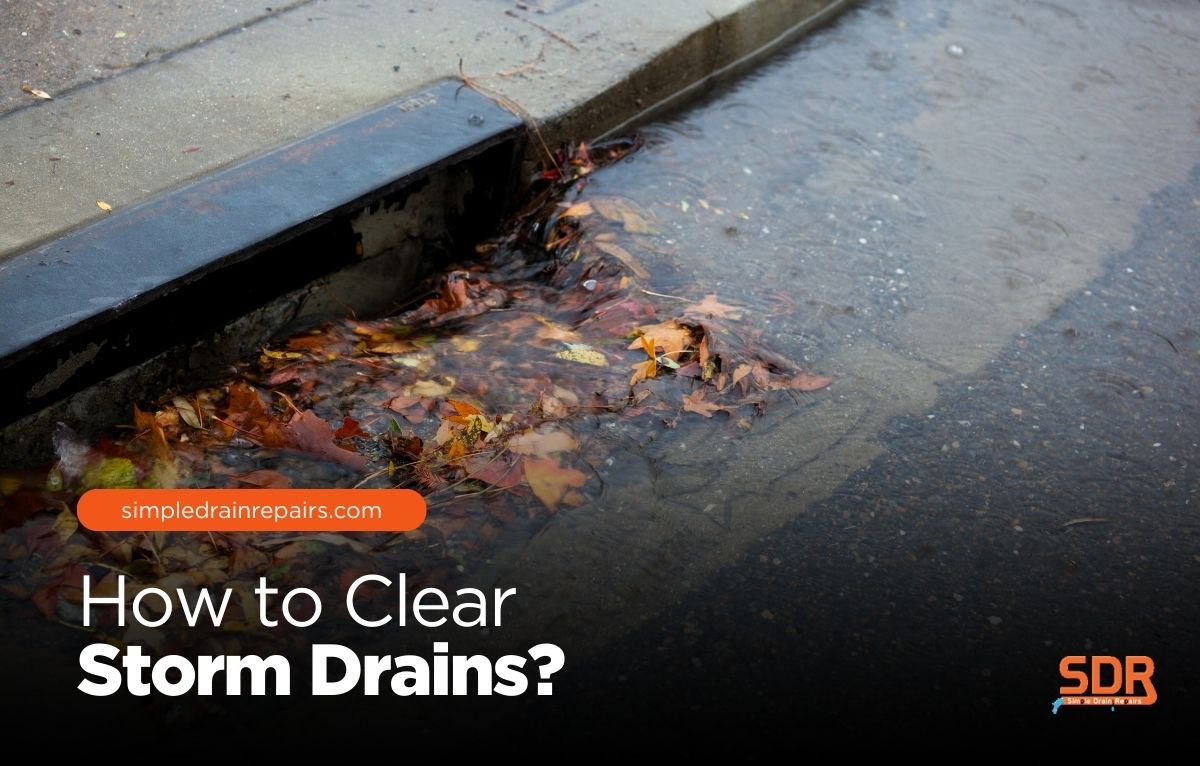
Storm drains are built to keep water moving away from streets, driveways, and properties during rainfall, but when they clog, problems can appear fast. Flooding, erosion, and even property damage are common results of a blocked system.
Many homeowners ask how to clear a storm drain safely without causing damage or overlooking hidden issues. Knowing the right steps to take, and when to call a professional, helps keep your property protected year-round.
Storm drains face constant exposure to leaves, dirt, trash, and other debris that gets washed into them. Over time, this buildup can slow drainage and eventually stop water flow altogether. In New Jersey, heavy autumn leaves and spring rain create peak risk periods for clogged drains.
Roots can also creep into underground lines, breaking through small cracks and making the blockage worse. Oil, grease, and sand from driveways add to the problem, hardening over time into a stubborn clog. Once a blockage forms, water has nowhere to go but back toward your property, which can lead to flooding or foundation stress.
Before looking at how to clear a storm drain, it helps to know when the system is in trouble. Some warning signs are easy to spot at the surface, while others take a closer eye.
Watch for these signs that your storm drain needs attention:
Catching these signs early makes clearing the drain simpler and reduces the risk of costly damage.
When you notice a blockage, the first step is clearing visible debris from the grate or drain cover. Always wear gloves to protect yourself from sharp objects, insects, or contaminated materials.
If the problem is at the surface, you can often restore flow with simple tools like a rake, shovel, or bucket.
For clogs deeper inside the pipe, homeowners can try flushing with a garden hose, but it is important not to force water too aggressively since this can push debris further down.
For stubborn blockages, calling professionals is often the best option. They use hydro jetting, vacuum trucks, and inspection cameras to clear clogs safely without damaging the system. These methods restore proper drainage and identify if there are cracks, root intrusion, or other hidden problems that caused the clog in the first place.
DIY solutions work for surface debris, but deeper clogs usually require professional tools and training. Professionals know how to clear a storm drain fully so that problems do not come back a few weeks later.
Common methods include:
These solutions not only clear the immediate problem but also give homeowners confidence that the system is fully restored.
Learning how to clear a storm drain is helpful, but long-term care prevents clogs from forming in the first place.
Storm drains are exposed to constant debris, so even a recently cleared system can become blocked again within months if not maintained.
Property owners who schedule regular inspections and cleanings enjoy fewer problems during heavy storms.
This is especially important in areas with lots of trees, busy roadways, or heavy rainfall. A blocked storm drain does not just cause inconvenience—it can lead to foundation damage, mold growth, or erosion that affects property value.
Storm drain care is not only for professionals. Homeowners can reduce the chance of blockages by taking simple steps throughout the year.
Regularly sweeping driveways and sidewalks prevents leaves, sand, and trash from entering the system, while properly disposing of grease and oils keeps harmful buildup from forming inside pipes.
It is also important to avoid piling mulch, soil, or landscaping debris near drain inlets, since these materials can wash directly into the system during rainfall.
Scheduling professional drain cleaning every year or two adds another layer of protection, and keeping trees trimmed while monitoring root growth near underground lines reduces the risk of intrusion.
These preventive measures are straightforward but highly effective, and they can make the difference between a reliable storm drain and one that floods your property during the next storm.
So, how to clear a storm drain? The answer depends on the cause and depth of the blockage. For surface clogs, removing leaves and trash may be enough. For deeper issues, professional inspection and cleaning ensure the system is safe, effective, and long-lasting.
Storm drains are a critical defense against flooding, but they need regular attention to perform properly. By keeping drains clear and scheduling preventive maintenance, homeowners and businesses avoid expensive repairs and property damage.
At Simple Drain Repairs, we specialize in storm drain inspection, cleaning, and trenchless solutions for every type of property.
From clearing stubborn blockages to providing long-term maintenance, our team delivers solutions that protect your investment and keep water flowing where it belongs.